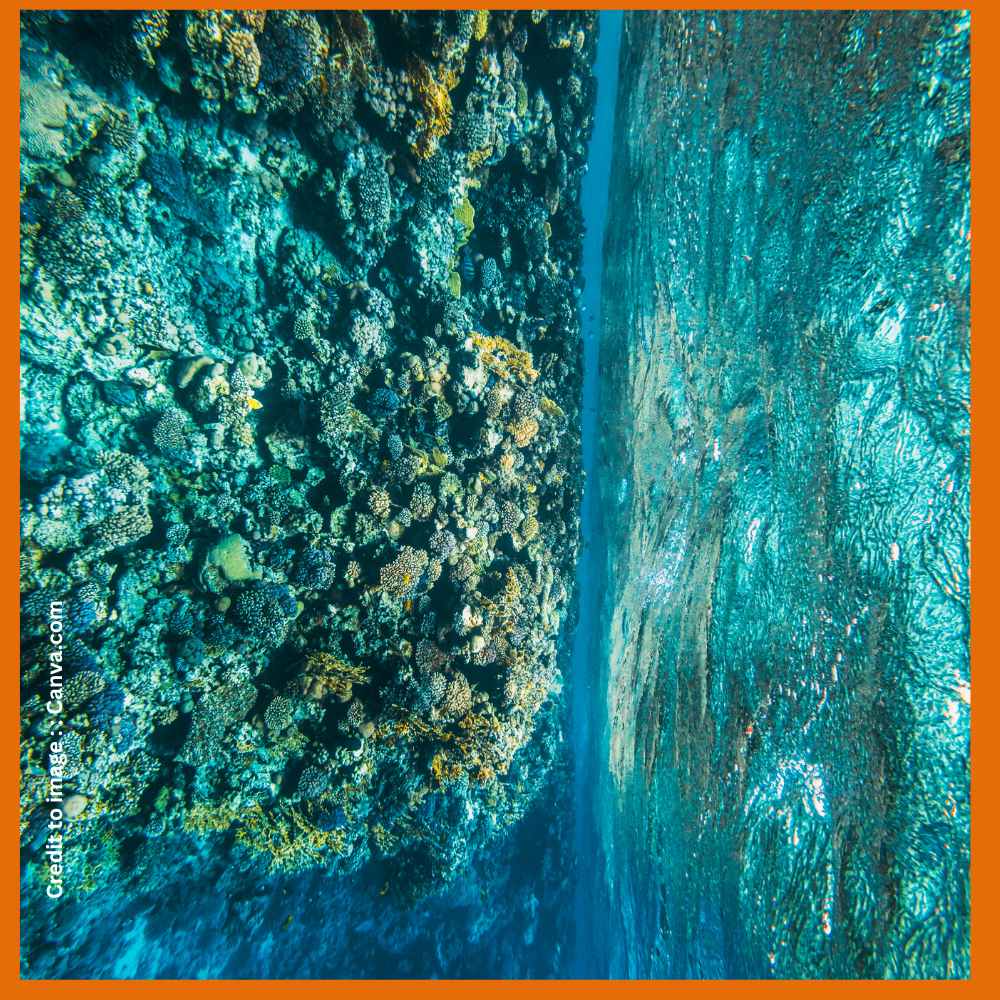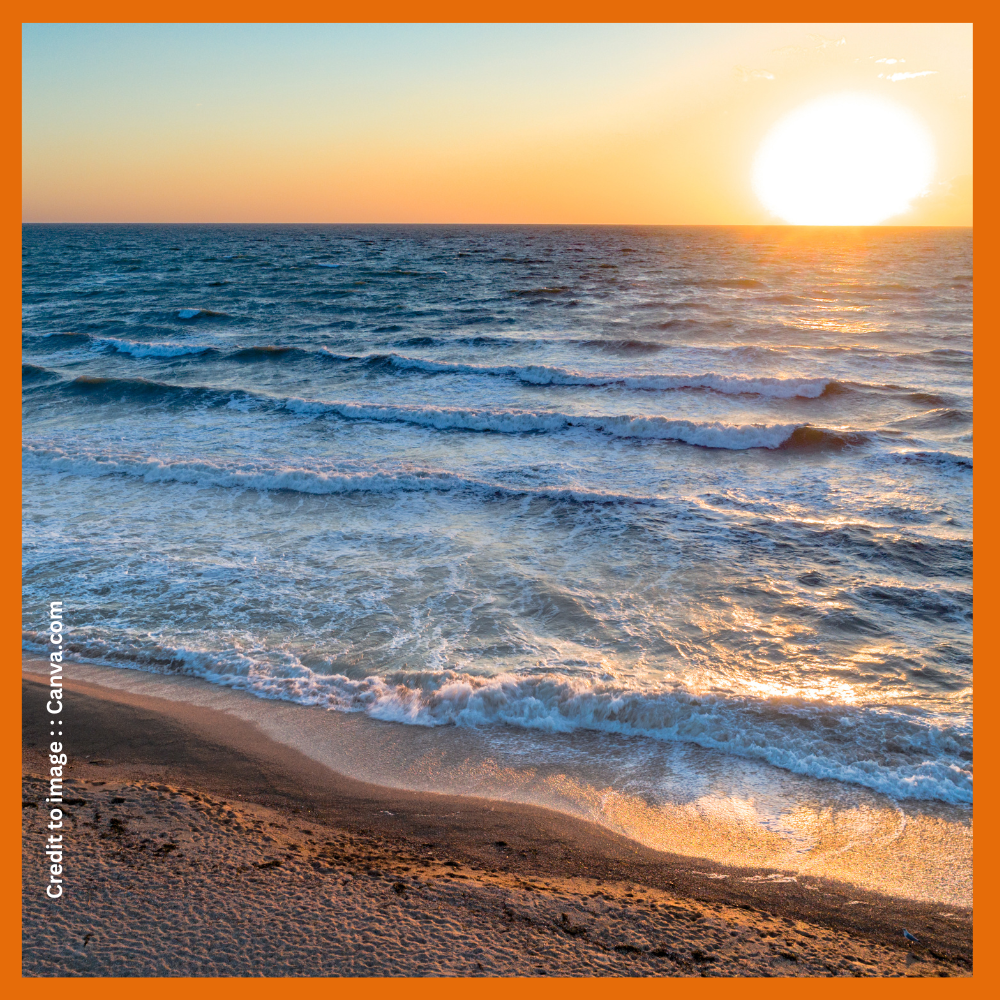The Red Sea is a remarkable marine ecosystem that lies between Africa and Asia, offering immense ecological, scientific, economic, and climatic value. Known for its unique coral reefs, high salinity, and strategic geopolitical position, the Red Sea plays a critical role in global biodiversity and climate regulation. This article explores the Red Sea’s geological formation, scientific data, marine biodiversity, its role in climate systems, and emerging threats. This article will explore the scientific data of the Red Sea, its climatic role, biodiversity value, and how it affects both regional and global environmental dynamics. “Exploring the Red Sea”
Introduction to the Red Sea
The Red Sea is a narrow inlet of the Indian Ocean, located between northeastern Africa and the Arabian Peninsula. With its clear waters, diverse coral reefs, and rich marine life, it is both a natural wonder and a crucial ecological asset. Spanning area approx. 2,250 kilometer’s in length. The Red Sea is warmest and saltiest seas in the world .
Geographic and Geological Overview of the Red Sea
The Red Sea came into existence around 30 million years ago as a result of the tectonic separation between the African and Arabian plates. It continues to widen by about 1 cm per year due to ongoing tectonic activity.
Geographic Data Table: Red Sea
| Parameter | Detail |
| Length | 2,250 km |
| Maximum Width | 355 km |
| Surface Area | ~438,000 km² |
| Average Depth | 490 m |
| Maximum Depth | 3,040 m (Suakin Trough) |
| Salinity | 36–41 PSU (very high salinity) |
| Countries Bordering of Red Sea | Egypt, Saudi Arabia, Yemen , Sudan, Eritrea, Djibouti, |
Scientific Data of the Red Sea
The Red Sea is an area of high salinity, warm surface temperatures, and unique oceanographic features.
Scientific Data Table: Red Sea
| Scientific Feature | Measurement/Observation |
| Average Surface Temperature | 26°C to 30°C |
| Salinity Level | Up to 41 PSU |
| Coral Reef Coverage | ~2,000 km of coral reefs |
| Seawater pH Level | ~8.1 (alkaline) |
| Primary Productivity | Moderate to Low (due to nutrient limitation) |
Red Sea Biodiversity: A Marine Treasure
The Red Sea is home for 1,200 species of fish, with 20% endemic, and approximately 200 coral species. Which making it a biodiversity hotspot. Its reefs are known to be resilient to bleaching due to high natural salinity and thermal tolerance. “Exploring the Red Sea”
Biodiversity Data Table: Red Sea
| Category | Number of Species | Notes |
| Fish | 1,200+ | 20% are endemic |
| Coral Species | 200+ | Includes reef-building corals |
| Marine Invertebrates | 1,000+ | High ecological value |
| Seagrasses | 9 | Important for marine habitats |
| Marine Mammals | Dugongs, dolphins | Dugongs are endangered |
Red Sea’s Role in Climate and Oceanography
The Red Sea contributes significantly to climate regulation by acting as a heat sink and carbon store, influencing monsoon patterns in the Indian Ocean region. The high evaporation rate also impacts cloud formation and regional rainfall. “Exploring the Red Sea”
Red Sea and Climate Impact Table
| Climate Function | Impact Description |
| Heat Sink | Absorbs solar radiation and stores thermal energy |
| Carbon Sequestration | Supports blue carbon via mangroves and seagrasses |
| Evaporation Influence | Affects atmospheric moisture and rainfall |
| Coral Reefs as Buffers | Protect coastlines from storm surges and erosion |
| Climate Resilience | Corals show resistance to bleaching |
Threats to the Red Sea Ecosystem
Despite its resilience, the Red Sea faces numerous threats:
Oil spills and shipping routes
Tourism-related reef damage
Climate change and ocean warming
Unregulated coastal development
Overfishing and invasive species
Efforts by bordering nations like Saudi Arabia, Egypt, and Sudan are in place to promote marine conservation through Marine Protected Areas (MPAs) and coral reef restoration projects.
Frequently Asked Questions (FAQs)
Q1. Why is the Red Sea so salty?
Ans. The Red Sea experiences high evaporation rates and limited freshwater inflow, leading to very high salinity levels compared to other seas.
Q2. Why is it called the Red Sea?
Ans. Due to occasional reddish-brown blooms of the algae Trichodesmium erythraeum its known as Red Sea .
Q3. Is the Red Sea good for diving and tourism?
Ans. Yes! The Red Sea is one of the world’s top diving destinations because of its clear waters, rich coral reefs, and marine biodiversity or more .
Q4. What makes the Red Sea unique ecologically?
Its combination of high salinity, endemic species, and coral reef resilience under warm temperatures make it ecologically unique.
Q5. Is the Red Sea connected to any major oceans?
Yes, it connects to the Indian Ocean via the Bab el-Mandeb Strait and Gulf of Aden.
Summary
The Red Sea is a vibrant marine ecosystem of profound scientific, ecological, and climate-related significance. Its coral reefs, marine species, and strategic geographical location make it a hub of biodiversity and a critical part of Earth’s climatic systems. As human activities and climate change continue to threaten its health, regional cooperation and international conservation are essential for sustaining this natural treasure.”Exploring the Red Sea”
References
- UNEP (United Nations Environment Programme) – Red Sea Biodiversity Report
- National Geographic – Red Sea Coral Resilience
- Marine Biodiversity Journal, Springer – Unique Fauna of the Red Sea
- NASA Earth Observatory – Red Sea Climate and Ocean Color Observations
- International Union for Conservation of Nature (IUCN) – Marine Protected Areas in the Red Sea
PRAKRITI DARSHAN-NATURE AND ENVIRONMENT MAGAZINE
Prakriti Darshan is a leading Hindi-language magazine and digital platform dedicated to raising public awareness on vital issues related to nature, biodiversity, climate change, sustainable development, and environmental conservation. This magazine represents a unique blend of science, society, and sensitivity—offering a common platform for researchers, students, NGOs, policymakers, nature lovers, and conscious citizens alike.
With thought-provoking articles, inspiring stories, environmental research, impactful projects, and policy perspectives, Prakriti Darshan is a transformative journey toward a greener and more sustainable future.
Let us come together to protect and preserve our planet for generations to come. 🌿🌍
Join us in our mission to protect and celebrate the planet. 🌏💚
Click for more information
- Visit www.prakritidarshan.com for Free Magazine ,Free membership benefits ,offered price magazine @ Rs.1 or Rs.11 only and more ……
- 🎗️Sponsor Prakriti Darshan Magazine – Support our environment mission.
- 📚 Explore the Environment Magazine – Read our latest and past issues.
- ✍️ Read Editor’s Article or Blog – Insightful thoughts from our editorial desk.
- 🌱 Join Membership – Be part of India’s leading green community.
- 🤝 Become an NGO Impact Story Partner – Share your grassroots impact nationwide.
- 🏢 Become a Company Partner – Showcase your CSR, ESG, or sustainability work.
- 👤 Become an Individual Partner – Volunteer, write, and raise your green voice.
- 📢 Advertise with Us – Reach eco-conscious readers across India.
- Eco Trails Newsletter
- Donate for “Hari Ho Vashundhara & Har school Hariyali “ Plantation campaign Associated Partner NGO :GDSS NGO www.gdssngo.org
BALA DATT SHARMA,
MANAGING EDITOR ,
PRAKRITI DARSHAN-NATURE AND ENVIRONMENT MAGAZINE
- Yamuna River- Lifeline of North India :A Scientific, Agricultural, and Environmental Perspective - July 14, 2025
- Jurassic World Rebirth Breaks Box Office Records : Global Box Office Revenue $1.5 Billion (And rising) Globally with a Roaring Environmental Message - July 14, 2025
- African Elephant: Facts, Types, Scientific Data, and Why Their Survival Matters for Our Planet - July 13, 2025







